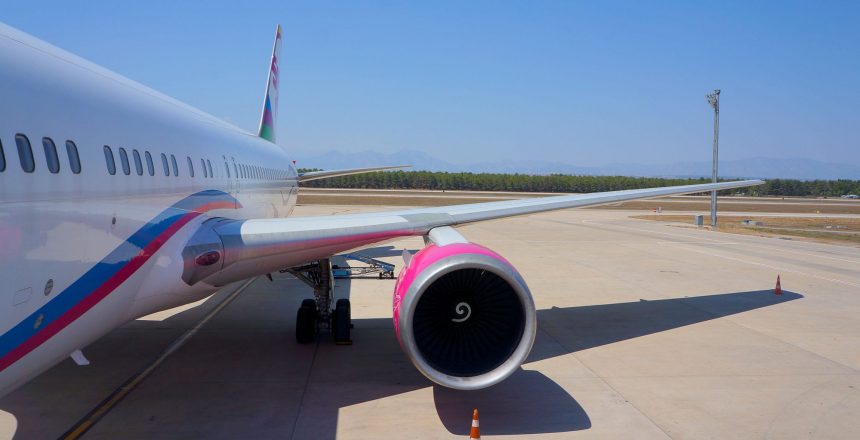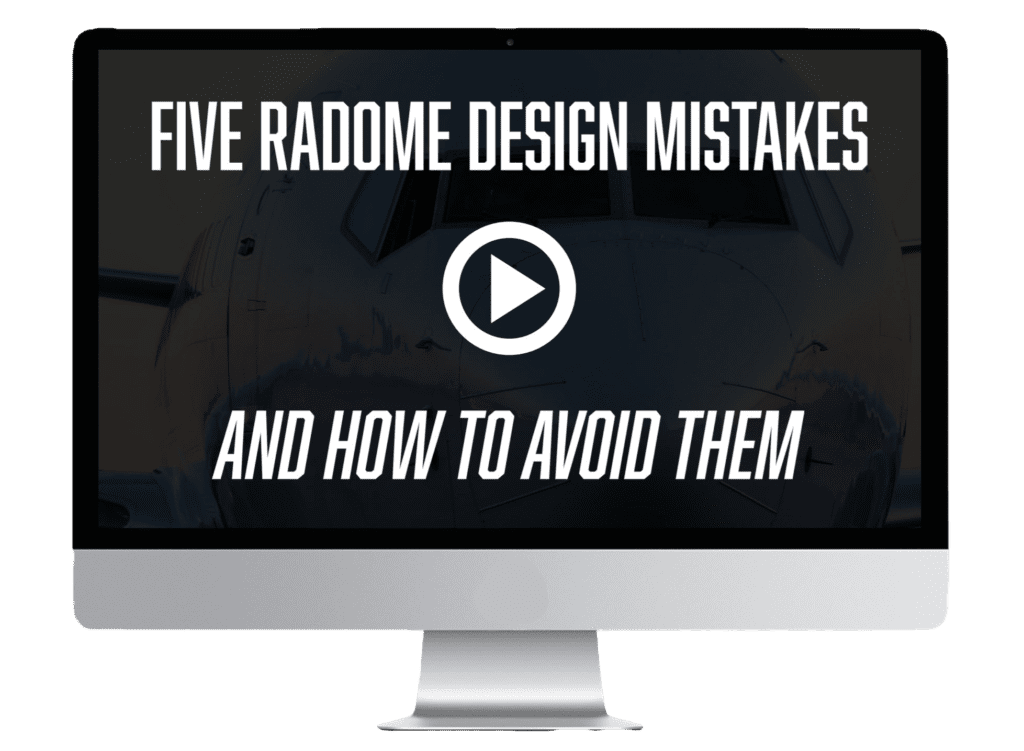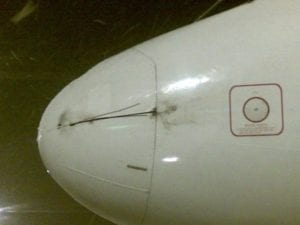The Boeing 757 lightning protection system keeps millions of passengers safe each year. As a workhorse commercial airliner, the 757 has tremendous safety measures in place–with lightning protection being one of them–to ensure takeoff and landing are smooth and easy.
In today’s article, we’ll dive into the lightning diversion system on the Boeing 757 and how it works.
Boeing 757 Lightning Protection System
The 757 is an engineering feat–an incredible aircraft capable of years of safe service.
Radomes for the 757 were tested according to standards outlined in the SAE AE4L-78 Blue Book document for lightning protection standards.
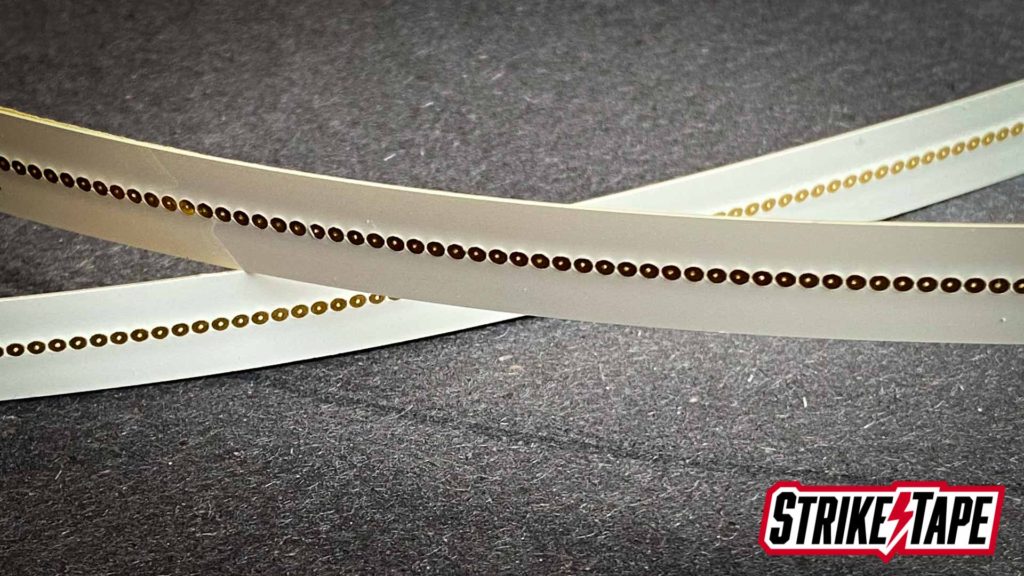
In 1977, this detailed guide on lightning diverter technology, written for NASA, set a strong standard for the future of lightning protection. Since then, significant advances in lightning technology have helped planes become even more safe and efficient.
Yet, far too many 757 radomes have experienced lightning punctures since entering into commercial service in 1983.
How the 757 Radome Was Designed
This radome was designed and certified to earlier FAA lightning requirements that utilized ground-based lightning strike data to create an inflight lightning environment.
This led to the metal bar lightning diverters on the side of the radome being too short to protect the radome from some inflight lightning events.
These overly short metal bar diverters are behind many of the incidences of puncture damage.
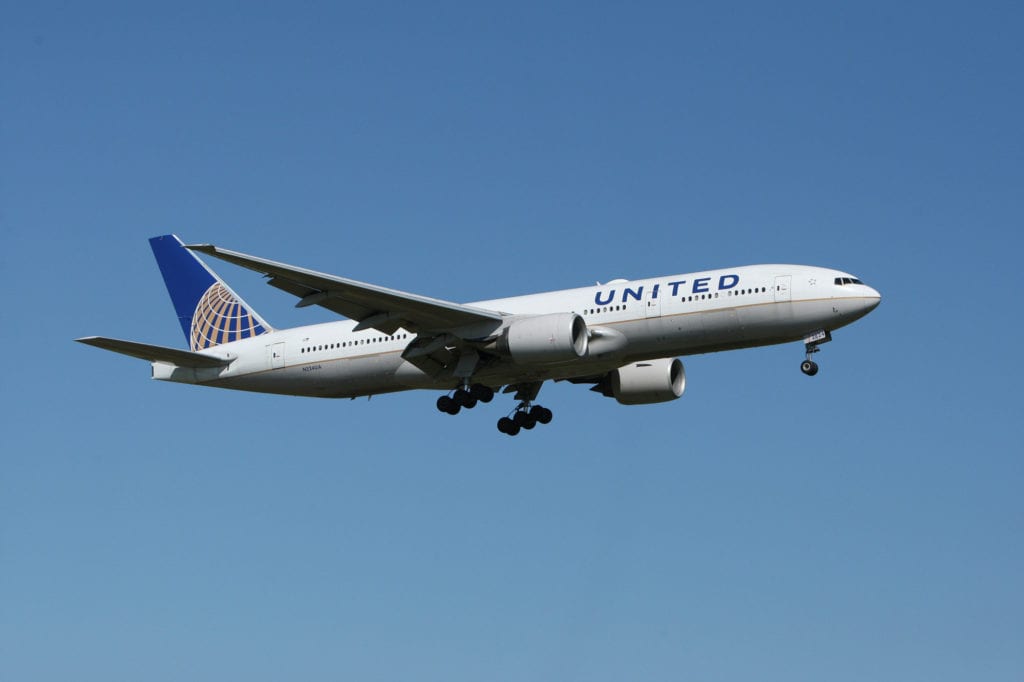
Several radome manufacturers, such as NORDAM and Saint-Gobain, offer STC’d radomes that utilize a combination of metal bar diverters and segmented lightning diverters.
These radomes offer significantly better lightning protection.
Metal Bar Diverters: Heavy Duty Protection
The metal bar diverter is a basic lightning protection device that helps direct lightning energy from the radome to the metal skin of the aircraft.
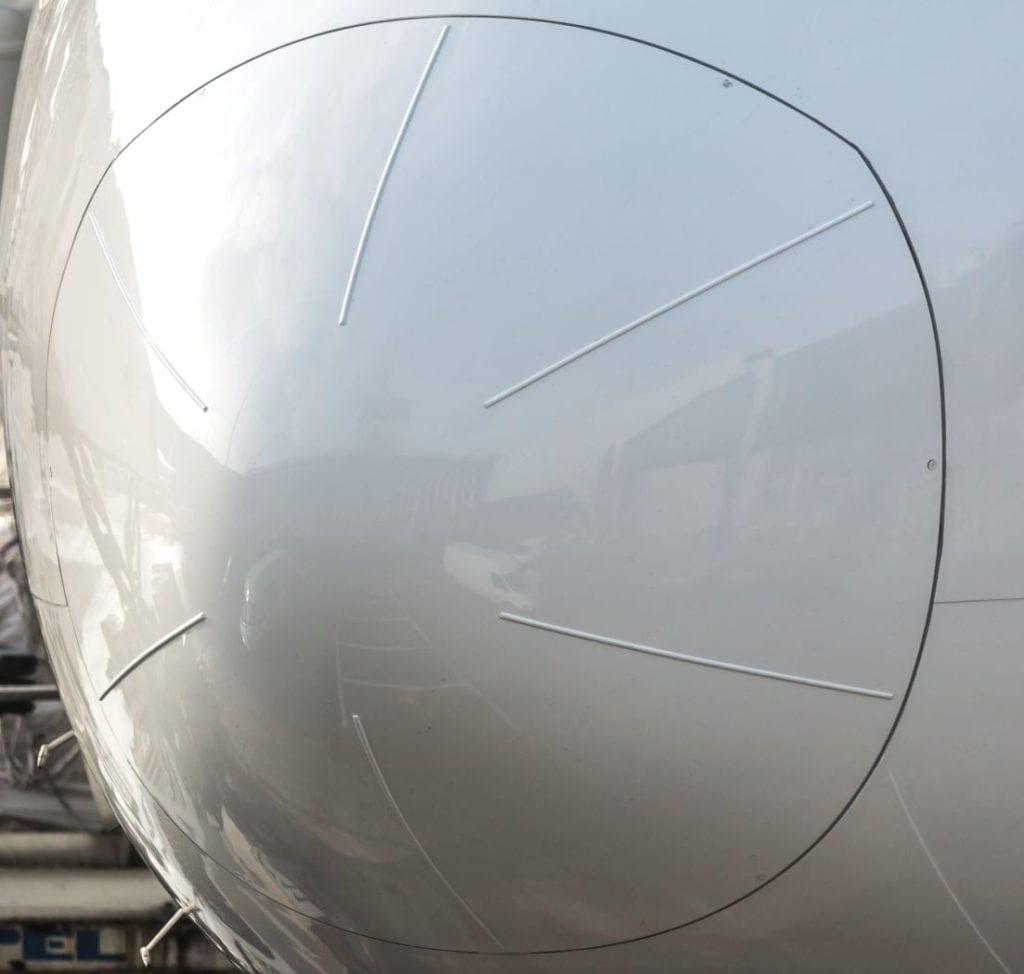
Metal bars are thick pieces of metal that extend from the radome to the aircraft body.
Yet, there is one main problem with metal bars: they are visible in the RF window, so they can’t extend very far down the radome without interfering with the radar system.
Using Only Metal Bar Diverters Isn’t Enough to Protect the 757
Many Boeing 757s are flying today with radomes that still include metal bar diverters in their design.
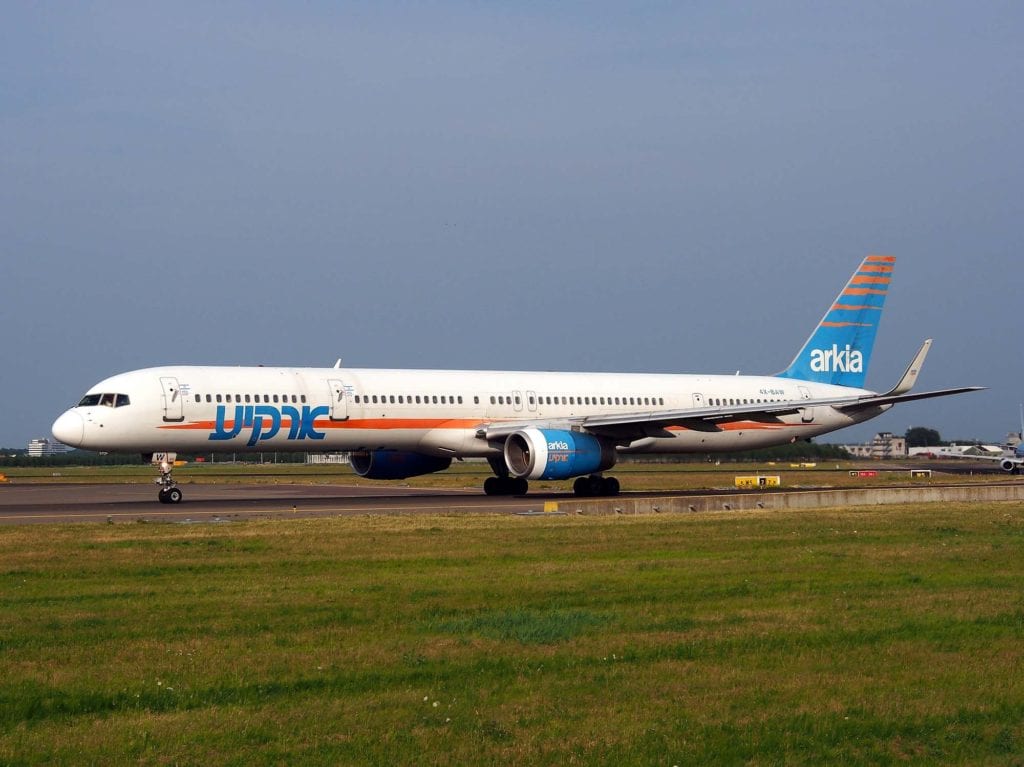
The questions remains if the current operators of the 757 will update to the better protect the radomes in their fleet.
A Modern Improvement: Create a Hybrid Lightning Diverter Design using Segmented Lightning Diverters & Metal Bars
A solution for operators of the Boeing 757 is to go to a hybrid design that includes two components:
- Metal bar diverters, which are durable and effective outside the RF window
- Segmented lightning diverters (such as Weather Guard StrikeTape), which can extend much further into in the RF window while remaining completely RF transparent
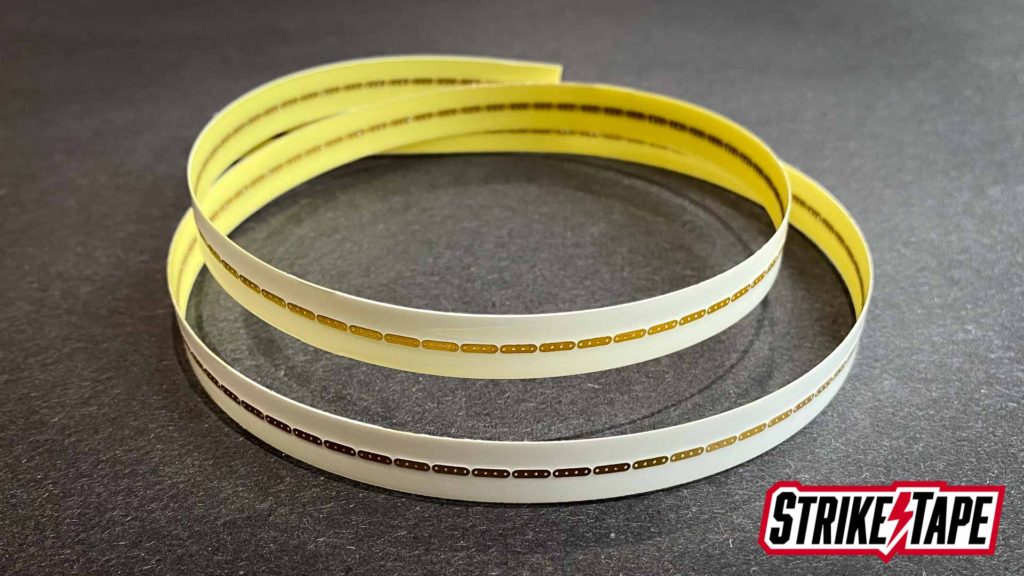
A hybrid system will give the benefits of both types of lightning diverter and provide optimal protection for such a high-tech aircraft. Learn more about hybrid designs below.
The Boeing 757 is a marvel of engineering, yet many of these older aircraft were subject to a lightning protection system design standard that has been updated multiple times, and may still need even more.
Lightning punctures to nose radomes can be prevented if lightning protection–most notably the segmented lightning diverter–extends far enough toward the front of the aircraft.
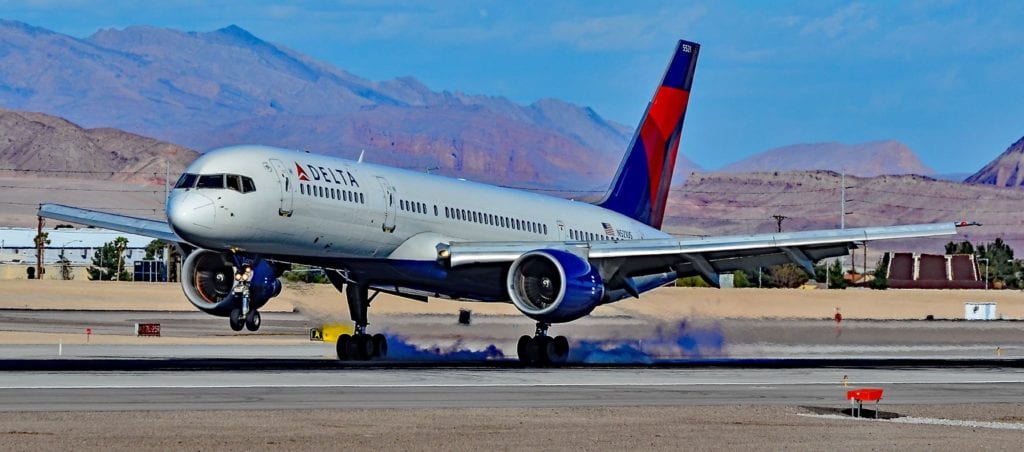
Even 757 radomes that do have segmented lightning diverters installed may not have them far enough to the front of the plane. This gap leaves exposure where a strike may go through the radome, rather than being attracted to the diverters.
Need Help with Your Radome Design?
If you’re a radome design engineer and you need help planning your radome project, give us a call. We love helping fellow engineers and have 25+ years of experience in lightning protection.

